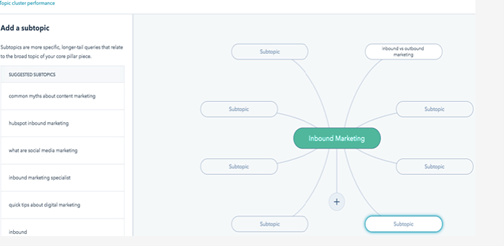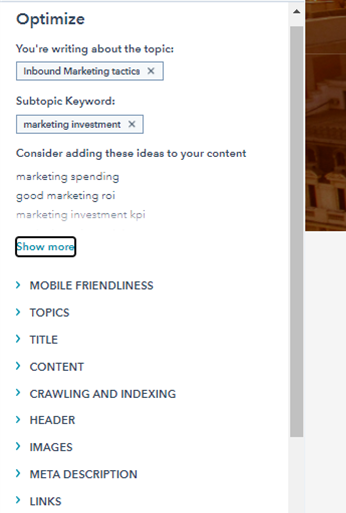
So, you've decided to start a business blog! That's great news, and as you know, it will bring numerous benefits to your company through better organic positioning, audience targeting, and lead generation. Plus, you'll be joining the ranks of 50% of the top 200 Fortune 500 companies that had a corporate blog as of 2018.
These days, businesses stand out (and not in a good way) when they don't have a company blog. However, creating a blog just for the sake of having one is a mistake, and therefore, you must understand the essentials for blogging for business before you get started.
Then, you can move onto the actual implementation of your business blog, which is what we will discuss in this article. If you're still deciding between blogging platforms, or you've already chosen HubSpot, discover the step-by-step process for setting up your company blog.
Wordpress vs. HubSpot for a Business Blog
Now the first question is, which platform do you choose? As of February 2021, WordPress is the content management platform with the largest market share at 64.2%. Keep in mind that WordPress's market includes blogs of all types (free users, personal blogs, etc.) and that for Inbound Marketing, HubSpot is the #1 Marketing Automation platform on the market. If you, like many people, are deciding between these two platforms, discover this comparison of HubSpot vs. Wordpress to help you make your decision. At mbudo, we are HubSpot Diamond Partners, and we highly recommend HubSpot for B2B blogging (we are also specialized in WordPress and we can even help you migrate your WordPress blog to HubSpot).
About the HubSpot Platform
 If you're considering HubSpot as your blogging platform, discover more about why HubSpot is the top platform for Marketing Automation.
If you're considering HubSpot as your blogging platform, discover more about why HubSpot is the top platform for Marketing Automation.
First of all, HubSpot was specifically designed for Marketing - its founders are even credited with creating the term Inbound Marketing. HubSpot is an all-in-one platform to integrate all aspects of your business strategy, from Marketing to Sales to Service (and your CRM, of course).
It's a place where you can track traffic and leads across every page and post. 55% of B2B marketers consider articles the most successful type of content for moving possible clients through the sales funnel, and with HubSpot you can interconnect all Marketing and Sales processes, from workflows, to lead nurturing, to email campaigns.
What's more, with HubSpot you can build chatbots, easily generate metrics dashboards and reports, connect social media and paid advertising accounts, and so much more. It truly is the ultimate software for businesses of all sizes, especially those who are dedicated to Content Marketing.
If you've already chosen HubSpot and have yet to get started on your business blog, below we will explain all the best practices for successfully setting up your HubSpot blog.
Steps for setting up a business blog in HubSpot
To establish your business blog in HubSpot, you'll first want to create or select a blog template. This can be done in the HubSpot Marketplace where there are hundreds or free or paid options. You can then request a template migration from HubSpot, so that your website branding is applied to your new blog design. Or you can add stylesheets and establish company branding yourself (keep in mind, this may require some programming knowledge).
There are 6 simple steps create a new HubSpot blog:
- Click on Settings (the wheel icon) in the main navigation bar and navigate to Website > Blog.
- Click on "Create new blog" and establish an internal naming for your blog.
- Select a blog language.
- Set up the domain and URL for your blog. This must be done in your hosting provider.
- Select a template for your blog posts and listing page.
- Finish by clicking on "Create blog".
To create a blog post in HubSpot, follow these 5 steps:
- Navigate to the section Marketing > Website > Blog.
- Click "Create" and select "Blog Post".
- Determine the blog domain and language.
- Input your text and images.
- Customize the settings, including the article title, meta description, URL, author, tags, associated campaign, featured image, and image alt text.
HubSpot SEO Strategy: Pillar Pages and Topic Clusters
One of the best things about HubSpot blogging is its Pillar Page & Topic Cluster tool. This tool allows you to interconnect your blog posts in order to establish a relationship between them and give more importance to certain core pieces. These core pieces are your "Pillar Pages", pages that you want to position highly on search engines. Giving context and linking back to the pillar are your topic clusters, which are typically a series of blog posts that provide additional information. By using this structure, search engines will fully understand the relationship between your posts and will better categorize and rank them.

Additional SEO Features: Optimize Tool
70% of online marketers say that content creation is their most effective SEO strategy. Luckily, the Optimize tool within HubSpot helps you apply SEO best practices to each of your pages and posts. It is necessary to have implemented the Pillar Page and Topic Cluster structure mentioned above, so HubSpot can make recommendations based on the associated topic and keywords.
- Within the page editor, you'll see the Optimize tab in the top panel.
- Here, you'll find information related to the Pillar and subtopic, as well as SEO tips for the title, content, images, links, and more.
- Items that require further action will have a red circle next to them, while actions that have been completed will feature a green checkmark.

Your business will start to reap the benefits of your company blog within no time. Maybe you'll see your pages rank higher on search engines or find that your leads are better informed. The possibilities with blogging are endless. If you need help with your blogging strategy or setup, mbudo is here to help! Contact us.

Mary Swick
Mary is a professional copywriter with over 10 years of experience in Marketing and Advertising. As an American expat in Madrid, she enjoys the relaxed Spanish culture, hiking, and the latest shows from Netflix and HBO. Mary also loves cats and music (she's the office DJ!)
It may interest you
LATEST
BLOG POSTS
SUBSCRIBE TO MBUDO BLOG
And get your inbound news directly in
your inbox, once a month.


